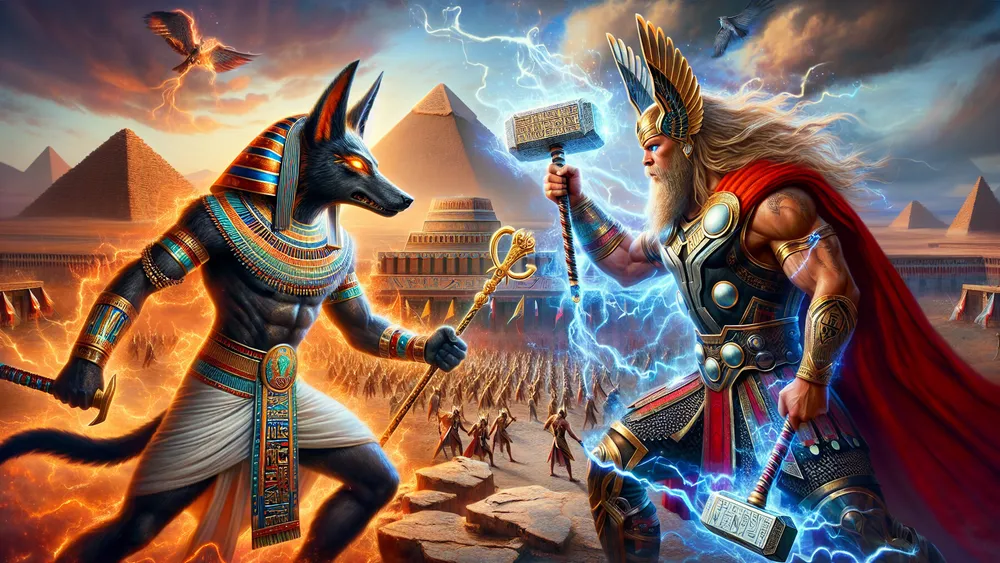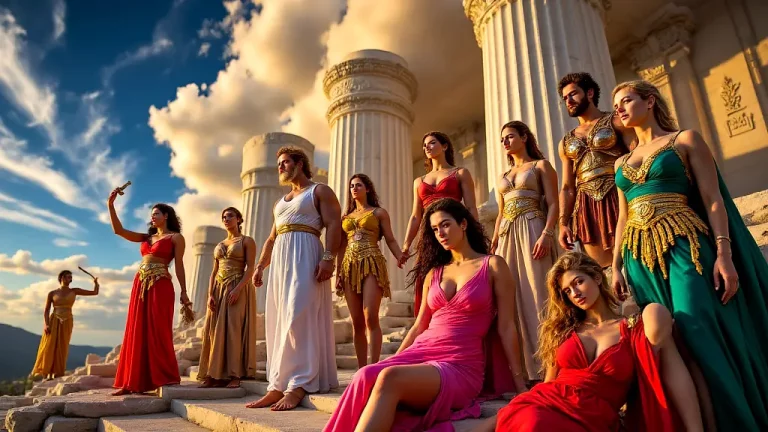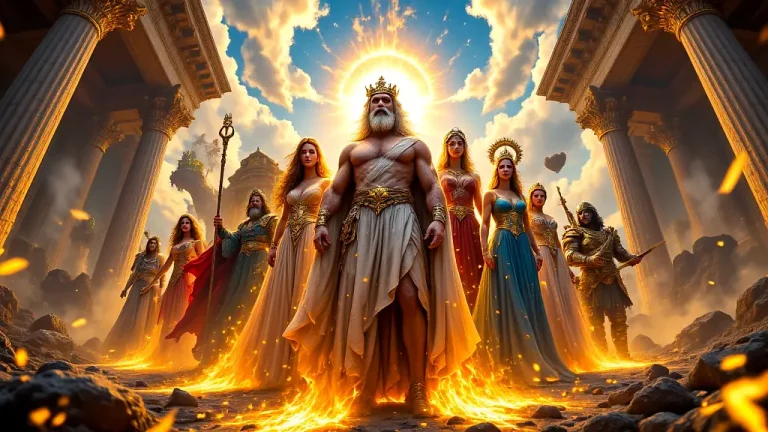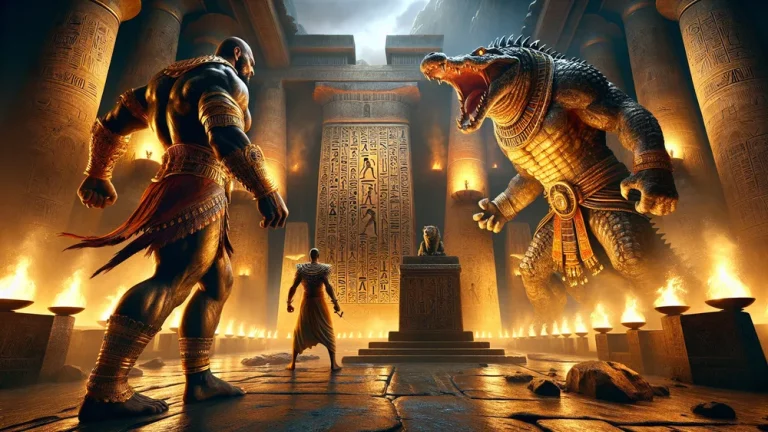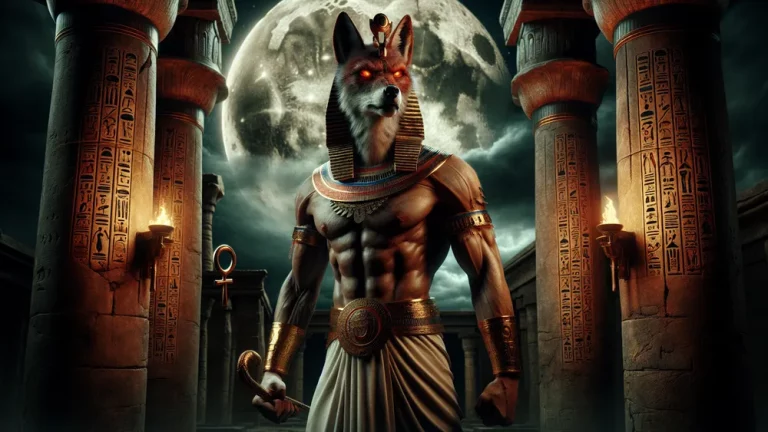Egyptian Mythology Vs Norse Mythology: Gods Clash
Stories from the past, and legends from long ago, these myths from different old cultures help explain the world around them, offer a unique understanding of what our ancestors thought and valued.
Key Points:
- Egyptian and Norse mythologies have unique origins and historical periods.
- Egyptian mythology originated along the Nile River, while Norse mythology comes from the region of Scandinavia.
- Egyptian mythology dates back mainly from around 3100 BCE to 30 BCE, while Norse mythology thrived during the Viking Age, around 790 CE to 1100 CE.
- Egyptian mythology revolves around gods like Ra, Osiris, Isis, Horus, and Anubis, while Norse mythology focuses on figures like Odin, Thor, Loki, and Freyja.
- Both mythologies have distinct creation stories: Egyptian mythology begins with the ancient waters of Nun, while Norse mythology starts with the empty void Ginnungagap.
- Egyptian mythology emphasizes the afterlife, with souls judged by Osiris, while Norse mythology includes Valhalla for brave fighters and Hel for others.
- The impact of Egyptian and Norse mythologies on modern culture is evident in various forms of media like films, books, and video games.
This blog post will look into two very interesting myth groups: Egyptian and Norse mythology, you might know about the big Egyptian pyramid structures or the fierce Viking fighters, but the gods and the stories are also interesting in these cultures. The origins of these myth tales will be explored, the powerful beings that are at the center of these stories we will meet, and we’re going to see their world creation stories.
Also, their views on living, dying, and what’s next after death, and how they thought about right and wrong will be seen. By the time you reach the end of this journey, a deeper understanding will be had about these old stories and how they still affect what we learn today.
Let’s all join in on this myth story trip and see what the Egyptian and Norse gods’ stories tell us.
Egyptian Mythology Vs Norse Mythology: Overview and Key Facts
| Aspect | Egyptian Mythology | Norse Mythology |
|---|---|---|
| Geographical Origin | Ancient Egypt, mostly along the Nile River | Region of Scandinavia, such as today’s Norway, Sweden, Denmark, and Iceland |
| Historical Period | Mainly from around 3100 BCE to 30 BCE | Mainly from the Viking Age, which is around 790 CE to 1100 CE |
| Primary Texts | Writings like Pyramid Texts, Coffin Texts, Book of the Dead | Poetic Edda, Prose Edda, with other stories |
| Pantheon Structure | Belief in many gods and goddesses, with a complex ranking | Many gods, focusing on two main groups: the Aesir and the Vanir |
| Creation Myth | Coming from the first waters of Nun, including gods like Atum and Ra | Creation from the empty space called Ginnungagap, with Ymir, Odin, and his brothers |
| Afterlife Beliefs | The soul’s trip through Duat, judged by Osiris, living forever in the Field of Reeds | Valhalla for fighters, Hel for others, rebirth after Ragnarok |
| Major Deities | Ra, Osiris, Isis, Horus, Set, Anubis | Odin, Thor, Loki, Freyja, Balder, Frigg |
| Symbolism and Themes | Order vs. chaos, life and death cycles, importance of ma’at (cosmic order) | Bravery, fate, certain death, fight between order and chaos |
| Cultural Influence | Influenced art, buildings like pyramids and temples, and ancient writings | Influenced Viking behavior, art, stories, and today’s popular culture |
| Modern Representation | Seen in films like “The Mummy,” books, and video games | Seen in films like “Thor,” TV shows like “Vikings,” and video games |
A Look at Egyptian and Norse Mythology
To see the details and wealth of Egyptian and Norse mythology, the origins must be visited first, also the gods that are in their stories; and the myths about creation that start their worlds.
Where It All Began
Starting in the historical and cultural parts of their areas, the origins of Egyptian and Norse mythology. Egyptian mythology, along the banks of the Nile River. Here, the ancient Egyptians built a civilization that lasted millenniums. Important times, like the Old Kingdom (2686–2181 BCE) and the New Kingdom (1550–1070 BCE), were key in making their myth stories. On the other hand, Norse mythology, from the rugged land of Scandinavia. The Viking Age (790–1100 CE), crucial to its growth. Just as now, stories make sense of the world, these ancient places used myths to understand their world. Here are some important historical events that influenced these mythologies:
- Egyptian Mythology: The joining of Upper and Lower Egypt, pyramids being built, pharaohs like Akhenaten ruling.
- Norse Mythology: Viking travels, trade routes being made, Scandinavia becoming Christian.
Knowing these beginnings helps us see the rich stories and beliefs in Egyptian and Norse mythology better.
Understanding the historical origins of Egyptian and Norse mythology helps us appreciate their ancient stories and beliefs more fully.
Meet the Gods
In Egyptian stories, the group of gods is large and complicated, each god having a specific role in order. Big gods are Ra, the sun god, traveling across the sky every day; Osiris, god of afterlife and coming back to life; and Isis, goddess of magic and motherhood. These gods were deeply connected to the everyday lives of ancient Egyptians, affecting things like farming and ruling.
However, Norse mythology has a group split into two main groups: the Aesir and the Vanir. Main figures are Odin, the all-father and god of wisdom; Thor, the thunder god, known for his strength and human protection; and Freyja, goddess of love and fertility. What’s interesting is, Egyptian gods often linked to parts of nature and society, whereas Norse gods usually focused on heroism and fate.
When looking at the roles and traits of these gods, many interesting contrasts, and similarities show up. For example, Ra and Odin are central in their mythologies, but Ra’s journey in the sky shows the cycle of life and death, while Odin’s search for knowledge often involves sacrifice and cleverness. Likewise, Isis and Freyja, both powerful goddesses, represent different sides of femininity and power – Isis in her role as a mother and protector, Freyja with love and war. To help you know these gods better, here is a table showing some major gods, their areas, and their key traits:
| God/Goddess | Mythology | Domain | Key Characteristics |
|---|---|---|---|
| Ra | Egyptian | Sun, creation | Travels across the sky, symbol of life cycle |
| Osiris | Egyptian | Afterlife, resurrection | God of the dead, judge of souls |
| Isis | Egyptian | Magic, motherhood | Protector, healer, mother of Horus |
| Odin | Norse | Wisdom, war, death | All-father, seeker of knowledge, one-eyed |
| Thor | Norse | Thunder, protection | Strong, protector of humanity, wields Mjölnir |
| Freyja | Norse | Love, fertility, war | Beautiful, associated with love and battle |
Seeing these gods and their traits, we can have a clearer view of the rich and varied stories that make Egyptian and Norse mythology.
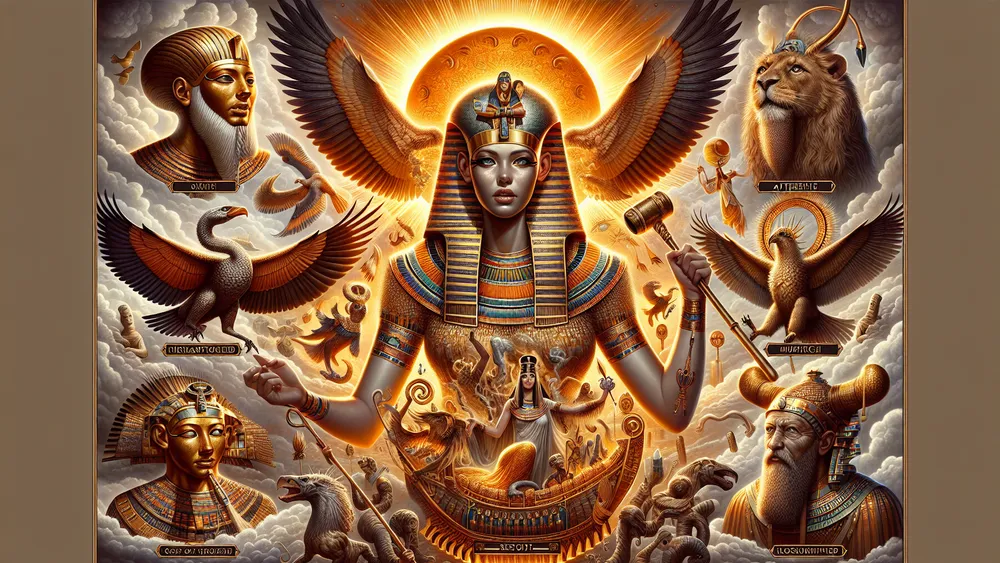
Stories About Creation
The creation stories of Egyptian and Norse mythology give interesting views into how these ancient people saw the beginning of the world. In Egyptian mythology, creation starts with the ancient waters of Nun. From this, the god Atum comes out and makes the first gods and the world. This story shows the importance of water and the cycle of life, reflecting the Egyptians’ dependence on the Nile River. But, Norse mythology tells of the world’s creation from the empty void Ginnungagap, where the giant Ymir is killed by Odin and his brothers to form the earth, sky, and seas. This story, which highlights themes of conflict and change, mirrors the tough and unpredictable environment of Scandinavia. Although both stories involve bringing order from chaos, they do it in ways that show their unique cultural settings. Important parts of these creation stories include:
- Egyptian Mythology: Coming out of Nun, creation by Atum, birth of gods like Shu and Tefnut.
- Norse Mythology: The empty Ginnungagap, killing of Ymir, creation by Odin and his brothers.
By comparing these stories, it becomes clear how each culture used their myths to explain the world and bring a sense of order and meaning.
Big Ideas and Key Concepts
Now, we looked at the beginnings and main figures of Egyptian and Norse mythology, so let’s go into the basic ideas and concepts that support these old belief systems.
Life, Death, and What Comes After
In Egyptian mythology, ideas about life, death, and the afterlife are deeply linked with their religious beliefs and practices. Ancient Egyptians thought life on earth was only part of a never-ending journey, with death being a change to the afterlife. The journey of the soul, or “ka,” involved going through the Duat, the underworld, where it would face different tests and judgments.
Osiris, who rules the afterlife, had a big role in this process, choosing the soul’s fate based on its actions in life. You might find it interesting that Egyptians placed great importance on funeral practices and tombs, like the pyramids, to make sure of a safe journey and a good outcome for the dead.
But, in Norse mythology, there is another view of the afterlife, where the idea of Valhalla stands out. Valhalla, the hall of the slain, is where fighters who died bravely in battle are taken by the Valkyries to live with Odin. This afterlife is shown as a place of honor and endless glory, where the dead warriors get ready for the final fight of Ragnarok.
Yet, not all souls go to Valhalla; others go to Hel, a place ruled by the goddess Hel, which is more like a neutral afterlife. The Norse belief system stresses bravery and heroism in life, mirroring their warrior culture. By looking at these two mythologies, we see how each culture’s ideas about life, death, and the afterlife were shaped by their own environments and societal values.
Good and Bad
Both Egyptian and Norse stories show good and bad through powerful gods whose actions shape how people see right and wrong. In Egyptian stories, Set stands as a symbol of chaos and badness, famous for killing his brother Osiris and making trouble among the gods.
The actions of Set are matched by the powers of Ma’at, an idea of truth, balance, and order, upheld by gods like Horus and Thoth. Meanwhile, Norse stories have Loki as a complex figure who shows both mischief and badness. The tricks and lying of Loki often bring trouble for the gods, leading to his part in Ragnarok, the end of the world.
You might find it interesting that even though Set and Loki are seen as bad, their stories also show the need for balance between order and chaos, reflecting the detailed understanding of right and wrong in these old cultures.
Fate and What’s Meant to Be
Both Egyptian and Norse stories show that fate and destiny are important in shaping the lives of gods and people. The old Egyptians believed in the idea of “Ma’at,” a universal order and balance that controls everything. This idea said that every being had a fixed path, and keeping Ma’at was needed for harmony.
It is surprising that even gods followed this universal order, affecting their actions and decisions. Meanwhile, in Norse stories, fate is shown by the Norns, three powerful beings who weave everyone’s destiny. The idea that fate can’t be changed comes up a lot, especially in the prophecy of Ragnarok, where even gods face their fixed end.
This belief in unchangeable destiny shows Norse acceptance of life’s hardships and praising bravery against unavoidable doom. Looking at these mythologies, we see how deeply the ideas of fate and destiny were woven into these old cultures, guiding both divine and mortal actions.
Fate and destiny play a crucial role in Egyptian and Norse mythologies, influencing gods and humans, with both cultures emphasizing the idea of a fixed path and the acceptance of unchangeable destinies.
Famous Myths and Stories
After looking at the main ideas in Egyptian and Norse mythology, we now look at some of the famous myths and stories that have fascinated audiences for many years.
The Story of Osiris
Osiris, Isis, and Horus’s story is very important in Egyptian mythology, which shows themes like backstabbing, coming back to life, and justice. Osiris, who was the god of the afterlife, was killed by Set, his jealous brother, who cut up his body and spread the pieces over Egypt.
It is interesting that Isis, Osiris’s devoted wife, started a long search to find and put back together his body, using her magical powers in the end to bring him back to life. This act of love and magic brought Osiris back to life, he became the ruler of the underworld because of it.
Their son, Horus, grew up and fought in many big battles with Set, trying to take back his throne. This story greatly affected Egyptian culture and religion, strengthening ideas of loyalty, justice, and the always ongoing fight between order and chaos.
It also made the pharaohs’ rightfulness clear, for they were seen as the living form of Horus, tying the story closely with Egyptian kingship and rule.
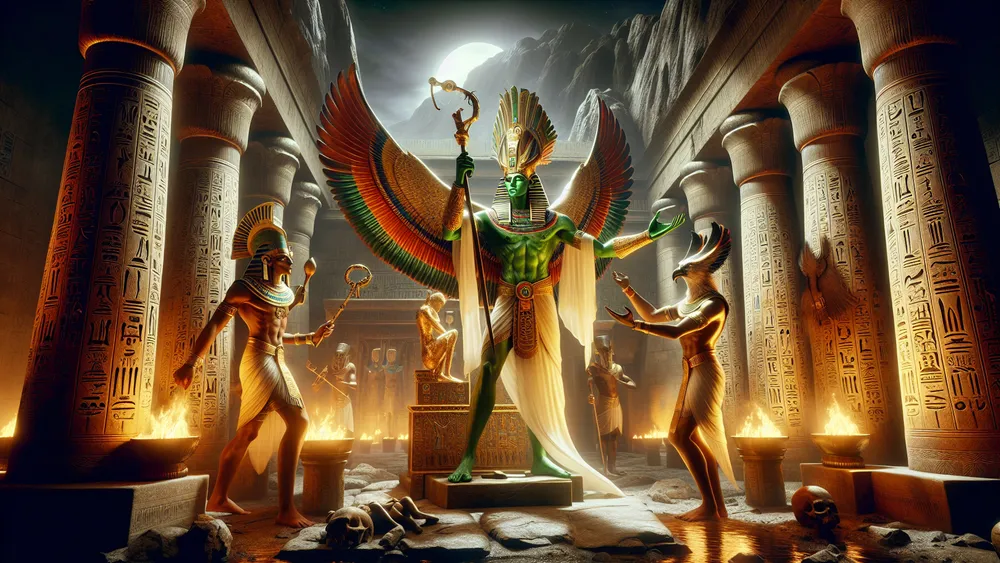
The Tale of Ragnarok
Norse myth about Ragnarok is often called the end of the world. It is a big and destructive story that tells about the final end and next rebirth of the world. It starts with natural disasters and a big fight between gods and giants, and then major gods like Odin, Thor, and Loki die.
You might find it interesting that this world-ending event is not just about the end but also about starting again. The world gets covered in water and then comes up again, ready for growing and new life.
The themes in Ragnarok, such as that fate cannot change and life repeating, show the Norse belief in a fixed destiny that even the gods cannot change. This story shows how Norse people accepted that life does not last and praised courage and honor even when facing certain doom.
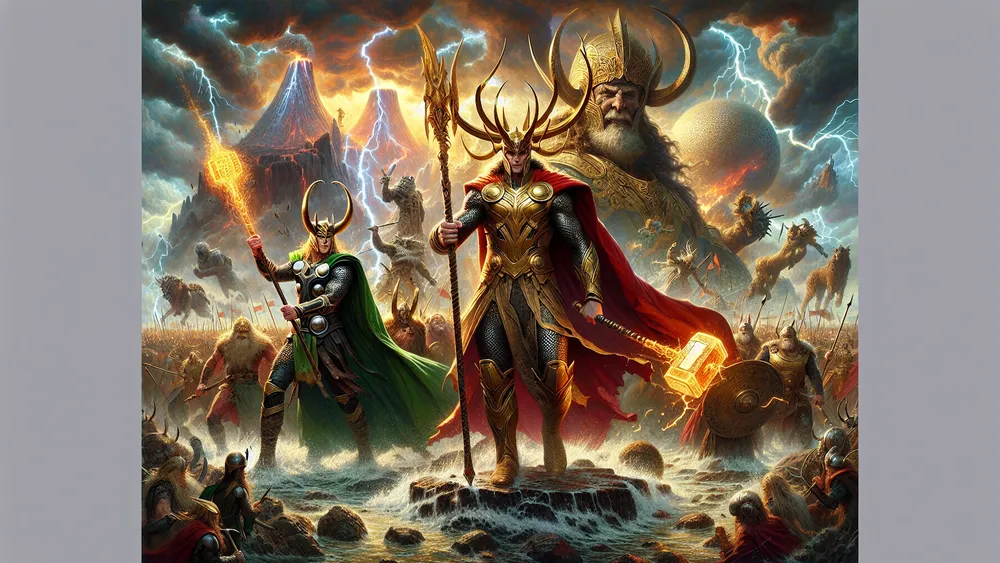
It is similar to how modern stories sometimes show the bravery of characters in world-ending situations.
Cultural Impact and Legacy
After we looked at some of the interesting myths from Egyptian and Norse mythology, now we should look at how these ancient stories have affected art, literature, and modern culture.
Art, Books, and More
Egyptian mythology and Norse mythology have left a lasting mark on art and literature over time, making many works that still interest people today. It’s surprising to know that ancient Egyptian stories affected the big grave paintings and statues in the pyramids and temples. They show gods like Osiris and Isis in detailed ways.
Likewise, Norse mythology has led to many artistic works, like the medieval Iceland stories and Richard Wagner’s famous series of operas, “Der Ring des Nibelungen,” which is based a lot on tales of gods such as Odin and Thor.
And in books, Egyptian stories have affected works like Agatha Christie’s “Death Comes as the End,” while Norse stories have made their way into modern fantasy books like J.R.R. Tolkien’s “The Lord of the Rings.” These stories also spread through modern media.
Movies like “Thor” from the Marvel Cinematic Universe and video games like “Assassin’s Creed: Origins” bring these old stories to life for new generations.
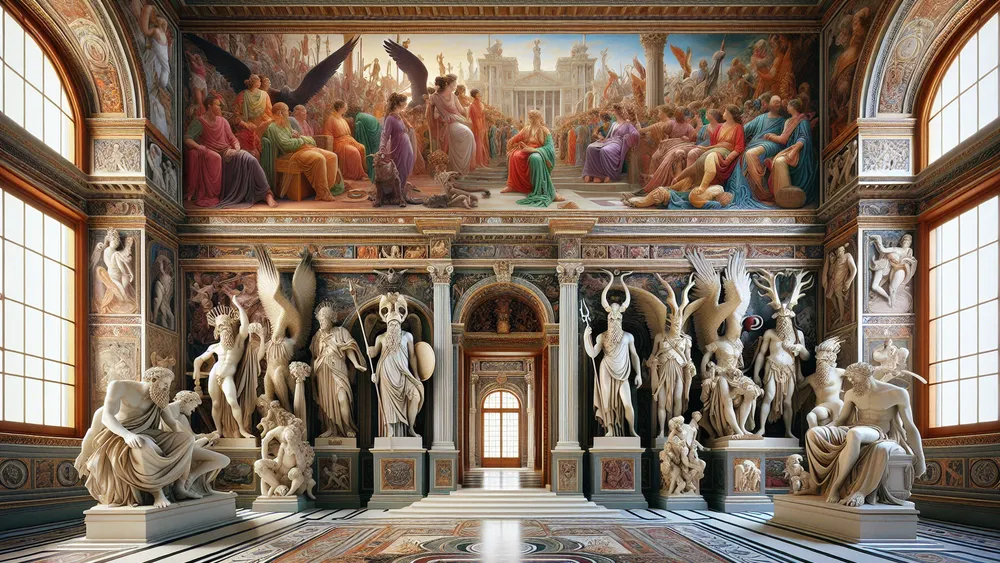
Today’s Take and Popularity
In today’s world, Egyptian mythology and Norse mythology still interest people. They appear in different kinds of modern-day media. You might notice that movies like “The Mummy” and “Thor: Ragnarok” mix old stories with modern ways of telling them. Books like Rick Riordan’s “The Kane Chronicles” and Neil Gaiman’s “Norse Mythology” brought these old stories to both kids and adults, making them easy to understand and interesting.
Video games such as “Assassin’s Creed: Origins” and “God of War” put players in very detailed worlds inspired by Egyptian and Norse mythologies, where they can meet gods and heroes. This modern-day popularity shows that these myths are timeless, and they continue to inspire and interest people, like superhero stories do in today’s popular culture.
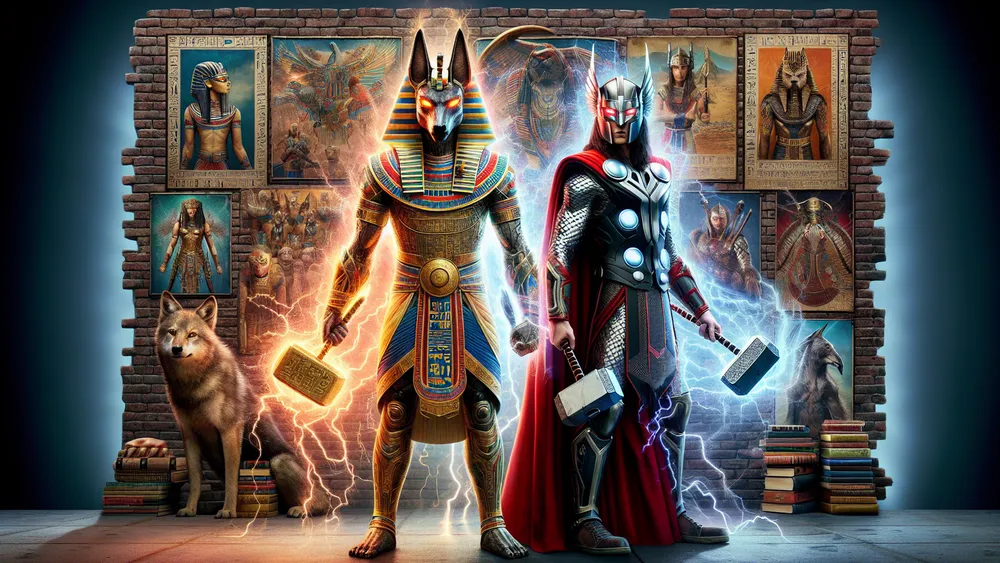
FAQs
1. What are the main differences between Egyptian and Norse mythology?
The main differences between Egyptian and Norse mythology lie in their distinct pantheons, creation myths, and views on the afterlife.
2. Are there any similarities between Egyptian and Norse mythology?
There are similarities between Egyptian and Norse mythology, such as the presence of complex pantheons and rich narratives about creation and the afterlife.
3. Which mythology has more gods and goddesses?
Egyptian mythology has more gods and goddesses compared to Norse mythology.
4. How do Egyptian and Norse mythologies influence modern culture?
Egyptian and Norse mythologies influence modern culture through their pervasive presence in contemporary media, such as movies, books, and video games.

